You may have heard the term food insecurity before, but what exactly does it mean? Food insecurity is defined as a lack of consistent access to enough food for an active, healthy life. It occurs when there’s a lack of available financial resources for food in a given household. The range of household food access is organized into four categories—from high food security, meaning households that have no problem consistently accessing adequate food, to very low food security, meaning that food patterns are disrupted and food intake is reduced at various times due to lack of money and resources.
Whom It Affects
Food insecurity is a complex problem that affects Americans in most communities across the country. In fact, in 2017, an estimated 1 in 8 Americans were food insecure. This equated to 40 million people, including 12 million children, who faced hunger that year.
When children don’t get enough to eat, they begin life at a grave disadvantage: Children facing hunger may struggle in school and are more likely to repeat a grade in elementary school. They are also at a higher risk of having social and behavioral problems, as well as developmental impairments in areas including language and motor skills. Food insecure children are also more likely to be hospitalized, and face a greater risk of health conditions like anemia and asthma. The reality is that 21 percent of children living in food insecure households may be forced to rely exclusively on charitable organizations to make ends meet.
Five million senior citizens also face hunger across America. As the rate of hungry people over the age of 60 drastically increases, food insecurity among senior citizens poses unique challenges. In fact, the rate of hunger among seniors has increased by 45% since 2001. Faced with growing medical needs as they get older, at-risk senior citizens often have to choose between eating high-quality food or having proper medical care.
And although food insecurity affects people from all walks of life, Americans that live in rural areas are the most likely to face hunger. One cause of this is the increased likelihood that rural areas are food deserts that lack supermarkets and other affordable sources of nutritious food. Rural areas also have higher rates of unemployment and underemployment, which results in people facing the predicament of having to choose between putting nutritious food on the table or paying all of their bills that week or month. Three-quarters of the counties with the highest rates of food insecurity in America are in rural areas, and 86 percent of the counties with the highest rates of child food insecurity are rural.
Race also plays a part in risk factor for food insecurity in America: Hunger hits African Americans harder, as poverty and unemployment disproportionately affects their communities. Black households face hunger at a rate more than twice that of white households, and 1 in 4 African American children is food insecure. Latino families also face hunger at staggering rates in our country, with nearly 1 in 4 Latino children at risk of hunger.
People facing food insecurity often miss meals and rely on the only food they can afford—cheap choices that are high in calories but low in nutrients.
How We Can Help Those in Need
While nonprofit organizations work to reduce food insecurity across America, there’s more that can be done to help those that face food insecurity in our neighborhoods. Raising awareness and educating the public about the complex issue of food insecurity is the first step toward working to reduce hunger. Volunteering time or money is also vital in the fight against hunger, as local nonprofits rely on the help of volunteers like you to assist their organizations in achieving their missions.
To learn more about the ways that you can help Feeding Westchester help those facing food insecurity, visit us at feedingwestchester.org/take-action/.






